CONSERVATION DIARY
Cape Town to build state-of-the-art interactive turtle rehab centre
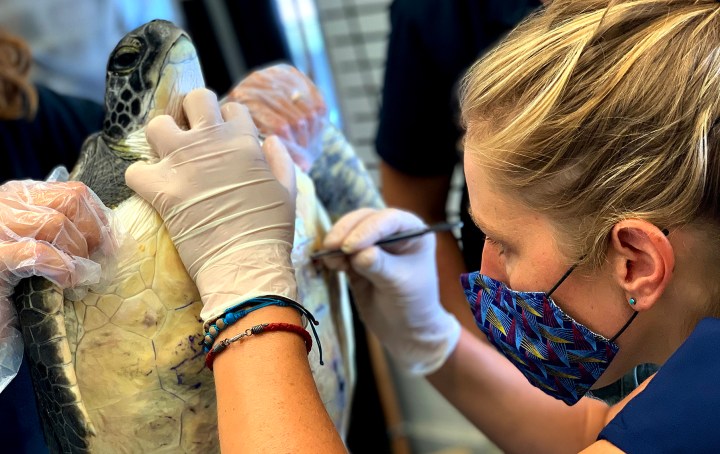
Caring for stranded turtles has been the task of Cape Town’s Two Oceans Aquarium for 20 years. Now a stand-alone Turtle Conservation Centre is to be constructed in Granger Bay.
Sea turtles, those ancient mariners of the wide oceans, are thought to have survived the Triassic Extinction 230 million years ago that paved the way for the rise of dinosaurs and the meteor strike that wiped them out 164 million years later. But now they are in terrible danger from human actions. Climate change, floating plastic, drift nets and hunting are taking their toll and all species are now listed as endangered.
Two Oceans Aquarium conservation manager Talitha Noble-Trull is on the roof of the Aquarium explaining the problem.
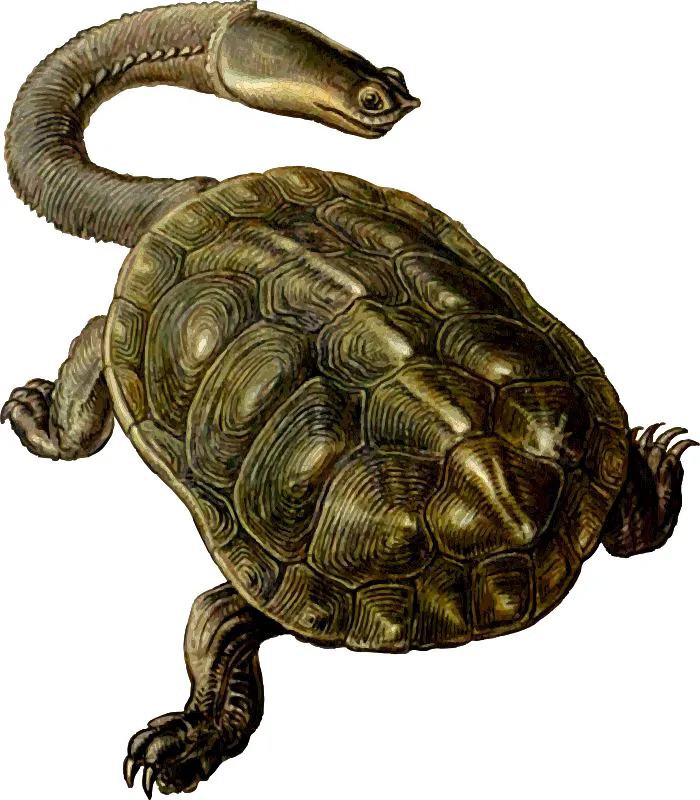
Turtles have been around for more than 200 million years. (Image: Wiki Commons)
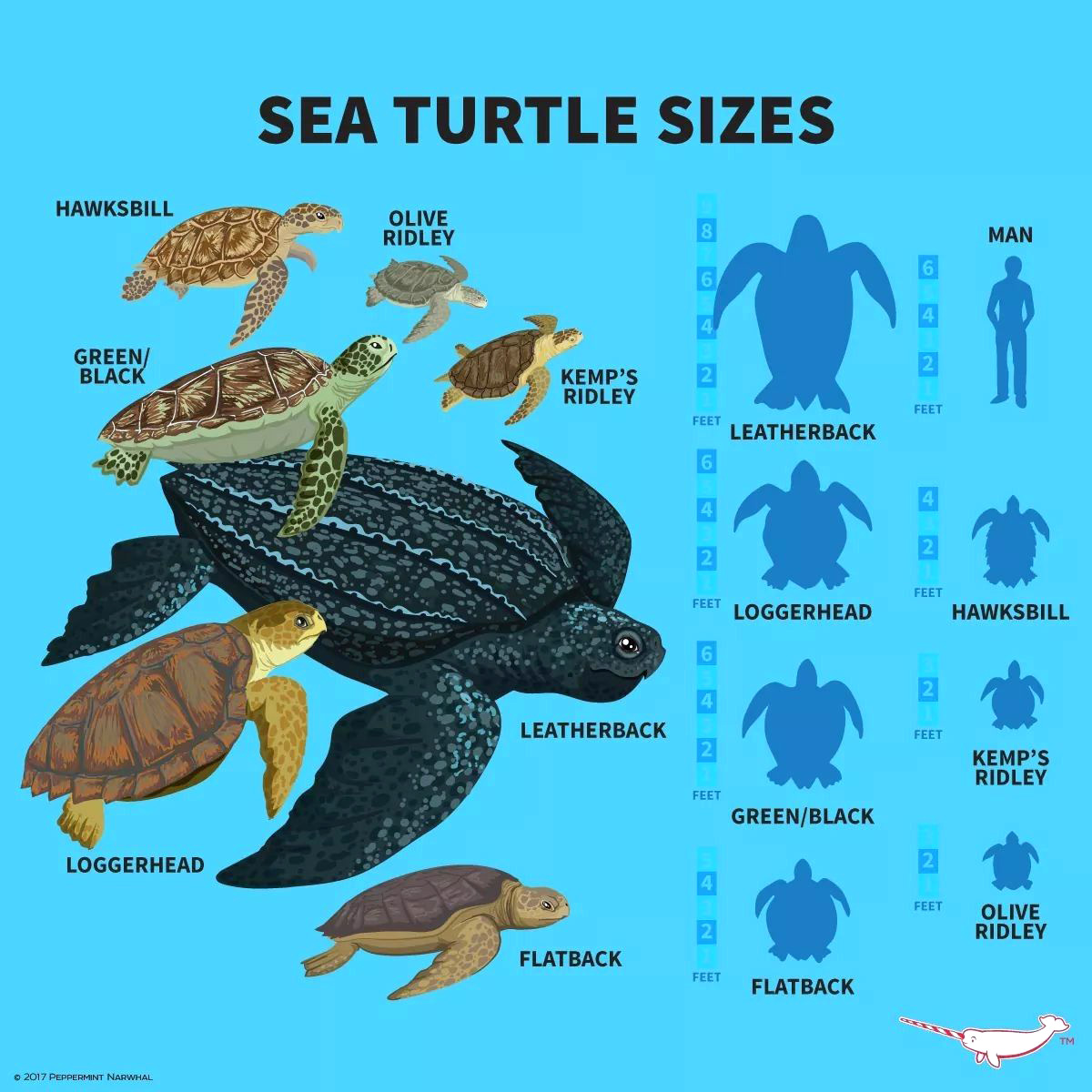
Turtle sizes. (Image: Wiki Commons)
“The oceans are no longer safe for turtles. Only two in every thousand baby turtles born will become adults. They get eaten by everything – they’re like popcorn for predators – but on top of that, they’re hungry and eat whatever’s floating. Lots of that is microplastic.
“Increasing intensity of weather systems from climate change is another problem. They’re born on East Coast beaches and make a dash for the sea. They’re swept down the coast by the warm Agulhas Current, but further south they get pushed by storms into cooler water – the temperature can drop from 25 deg C to 11 deg C and they go into thermal shock. Their body starts shutting down and they get washed ashore.
“At that point they would die. It’s natural for them to experience high mortality but not natural for them to have a tummy full of plastic. We have over 1,800 members of the public around our coast who go looking for them and get them to us at the Aquarium.
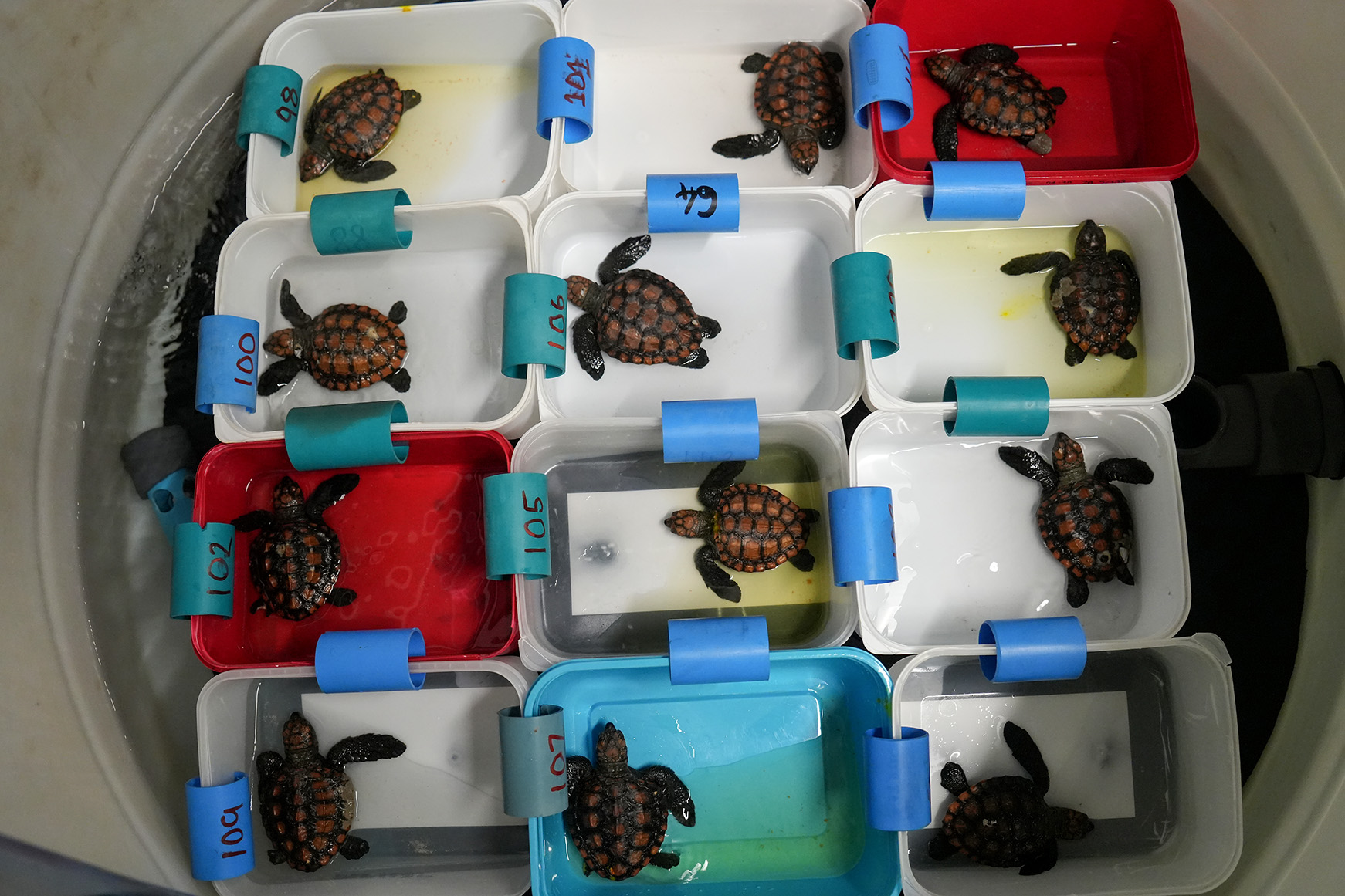
Turtle Conservation Centre staff admitted hundreds of turtle hatchlings during the recent storm surge in the Western Cape. (Photo: Two Oceans Aquarium)
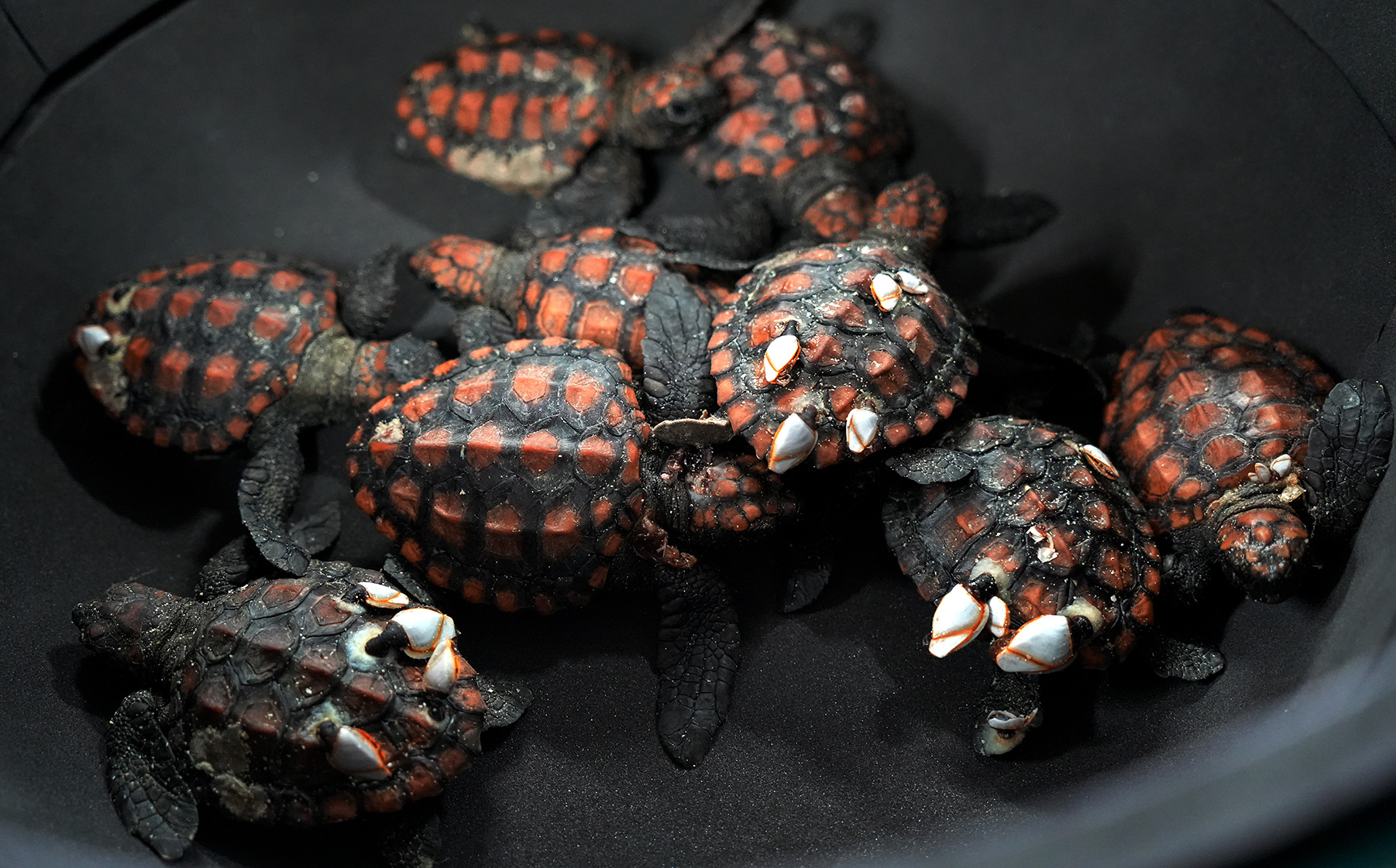
An intake of turtle hatchlings washed up on Western Cape beaches during last week’s storm. (Photo: Two Oceans Aquarium)
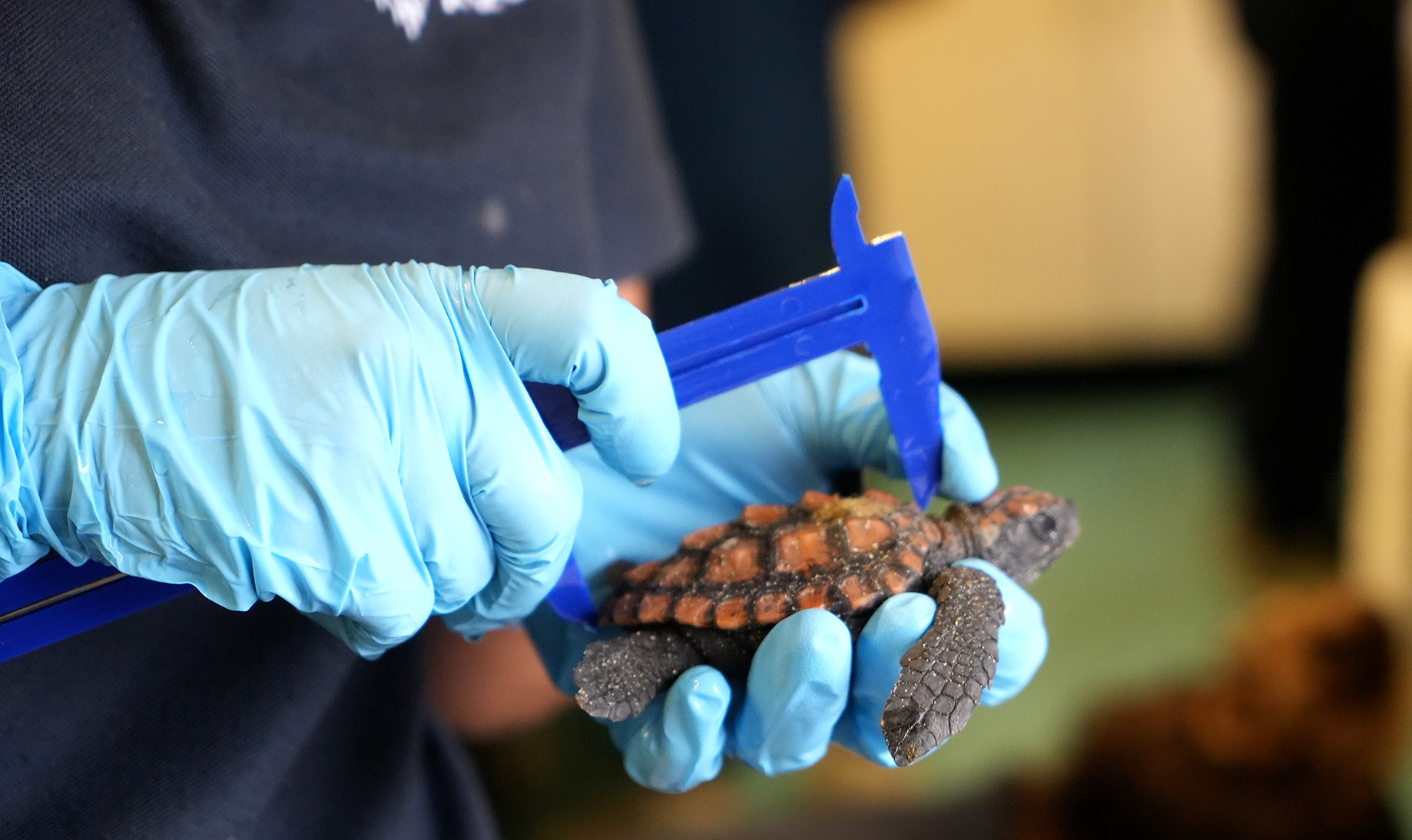
A turtle being measured during admission in the Two Oceans Aquarium Turtle Conservation Centre. (Photo: Two Oceans Aquarium)
“We have temporary holding centres along the coast, satellite clinics and drivers to bring them in. It’s a hugely successful system. A day ago we got 304 babies and today we’re expecting 30 more.”
‘World-class care’
Cape Town’s Two Oceans Aquarium has cared for stranded turtles for 20 years. Now a stand-alone Turtle Conservation Centre is to be constructed in partnership with the V&A Waterfront in Granger Bay.
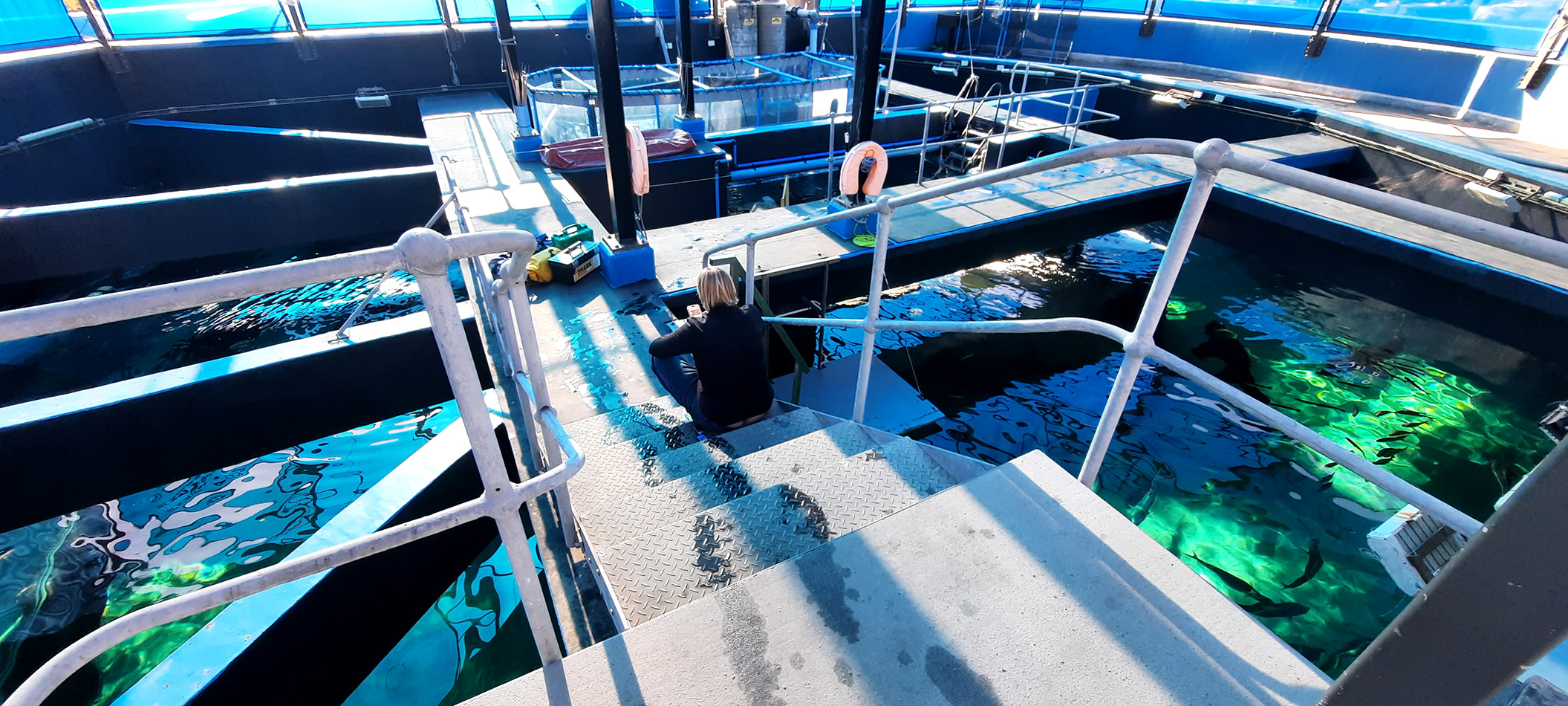
A view of the Two Oceans Aquarium from above, which most of the public never sees. (Photo: Don Pinnock)
“Humans are part of the problem so at the Turtle Conservation Centre we see it as our task to make some kind of difference, to bring them back to health, care for them and return them to the ocean.
“We can provide world-class care, but before we would receive 60 to 100 baby turtles in a stranding season, so getting over 300 within a week really strains our facilities.”
Read more in Daily Maverick: The trials, tribulations and joys of turtle liberation
From the roof of the Aquarium, you can peer down into the tanks full of creatures that visitors down below are staring up at in wonder. There are also tanks that house older turtles in rehab – a leatherback, loggerhead and hawksbill who occasionally push their heads above the water and gaze back with Yoda-like wisdom.
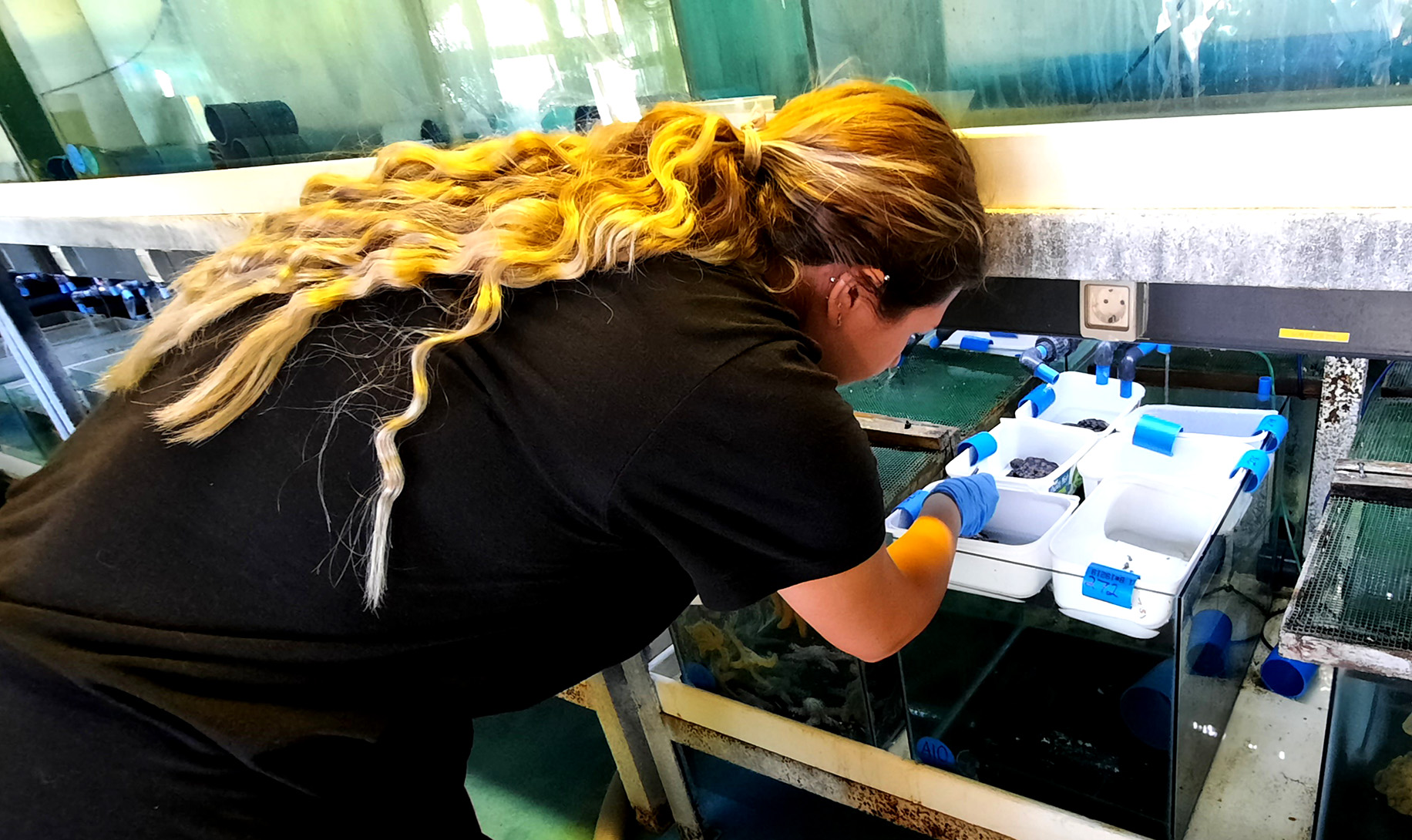
A volunteer tweezer-feeding a hatchling. (Photo: Don Pinnock)
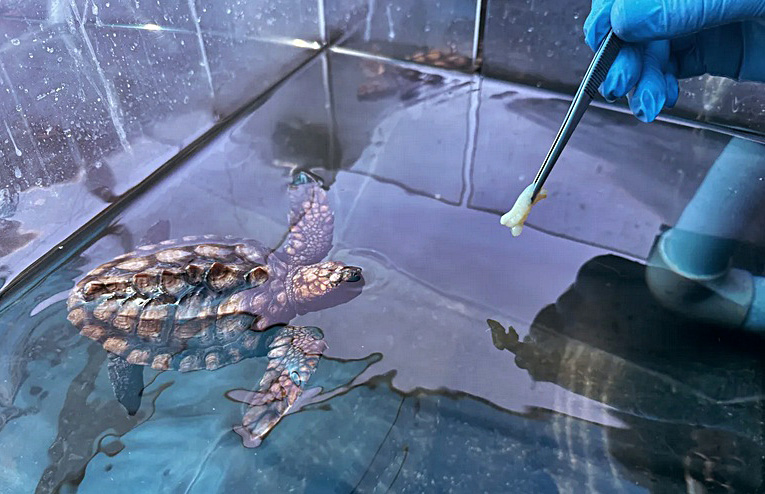
Tweezer-feeding a hatchling. (Photo: Two Oceans Aquarium)
In a large room filled with hundreds of plastic containers, a volunteer is feeding hatchlings with pieces of hake using a tweezer.
“They can only take small pieces at a time,” she explains.
Pretty soon, they’ll progress to a gel made from hake, white mussel, pilchards, vegetables like broccoli and supplements.
Open to the public
Back downstairs, executive chairperson of the Two Oceans Aquarium Foundation Ann Lamont is explaining the impact the new Turtle Conservation Centre will make.
“The aquarium has been doing this work for many years and I’m sure you found it interesting behind the scenes up on the roof. For us who work here it’s a privilege, but that work isn’t seen by the public and it should be. For a long time we’ve wanted to expose the rehab work to the public. The new centre will make that possible.
“The Victoria and Alfred Waterfront are putting R20-billion into developing Granger Bay and the turtle rehab centre will be part of that. In a 2,000m2 facility, it will bring under one roof turtle education, research, conservation, veterinary science and tourism. Importantly, members of the public will be able to see first-hand the work we do with turtles.
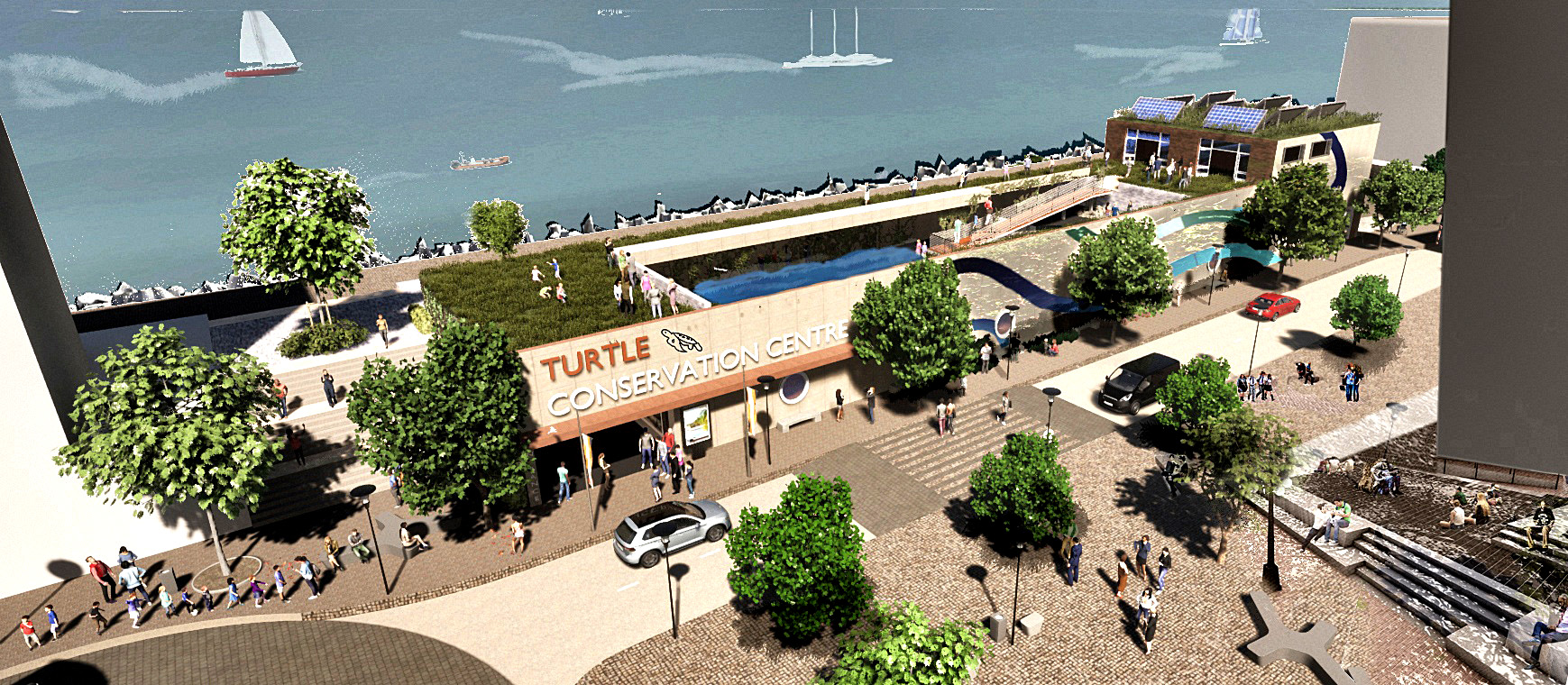
The planned new Turtle Conservation Centre in Granger Bay. (Image: V&A Waterfront)
“So many people don’t understand what lies beneath the ocean. We want to bring in music, art, social science research and make it very interactive and interesting for visitors, especially children.
“While our present facilities at the aquarium have served us well,” Noble-Trull said, “we have reached capacity as the number of turtles needing rehabilitation and long-term care is increasing every year.
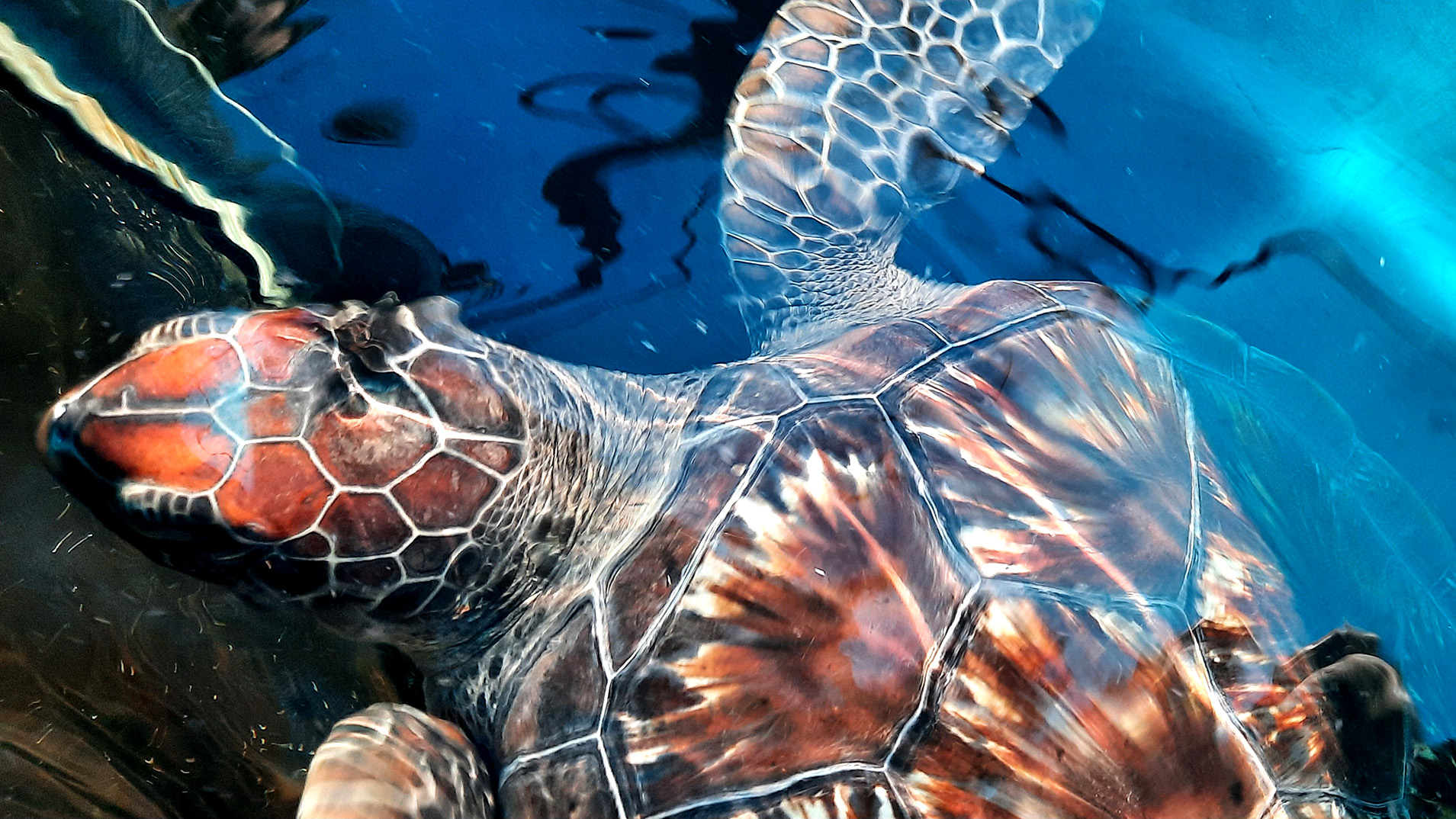
A turtle in rehab. (Photo: Don Pinnock)
“Our work with turtles is critical, given the impact of climate change and plastic pollution threatening all seven species. With the new centre we’ll have the resources to assist with turtle rescues around the entire African coast and not just South Africa.”
Rehab and release
Over the past 20 years, the aquarium has successfully released more than 1,000 turtles. These include Bob, the green turtle, who was in rehabilitation for eight years before she (sexing turtles can be complicated) was ready to be released and Novombu, a loggerhead turtle, who spent two years in intensive care before release.
Bob survived ingesting plastic pollution while Novombu was a victim of a ghost fishing net and was rescued with severe injuries. Their vast journeys after release, with those of Benhi, Turbo and Pan, can be tracked online.
Turtles have another problem that the aquarium cannot solve. Because the incubation temperature of eggs determines the animal’s sex, rising temperatures from global warming are causing imbalances, with far greater numbers of females being born. It’s not easy being a turtle these days.
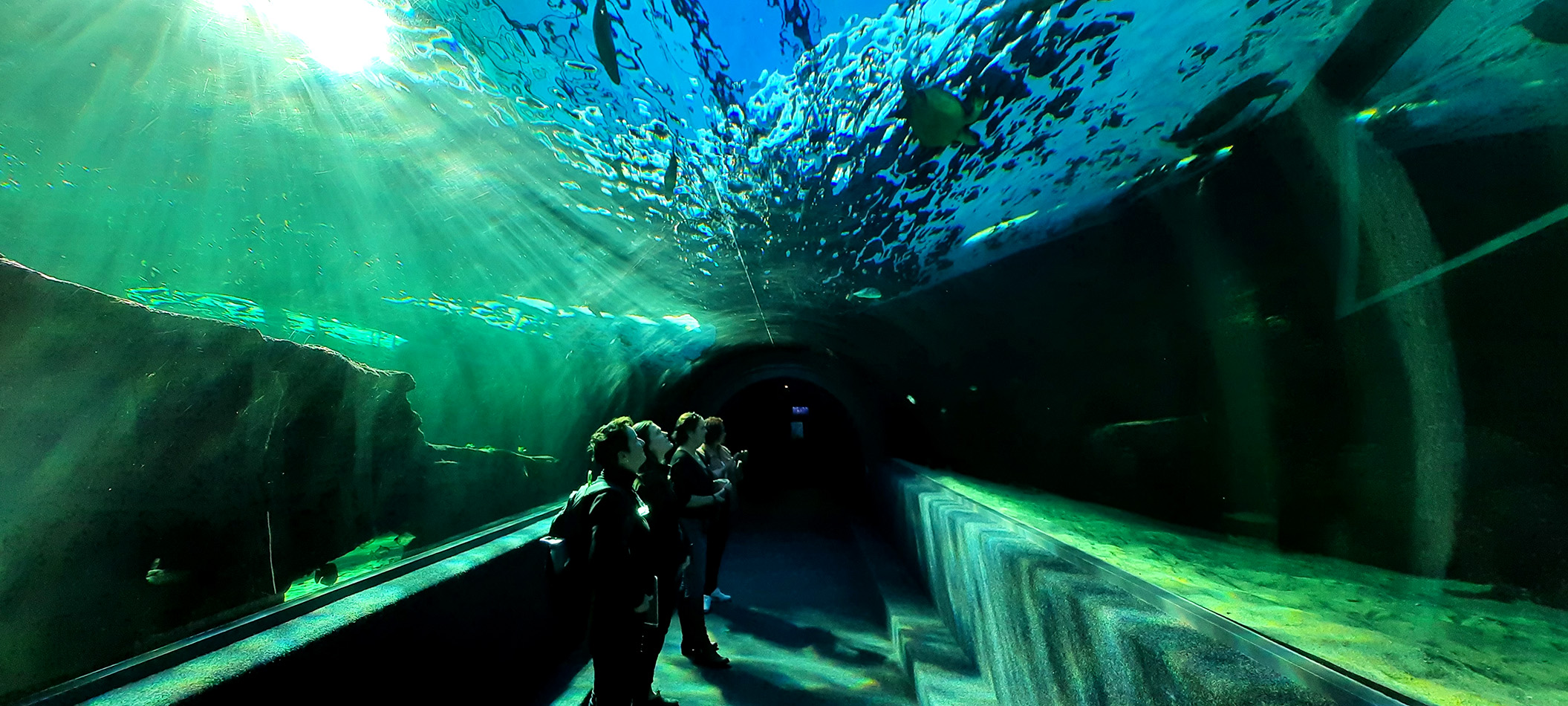
Underwater beneath the main tank. (Photo: Don Pinnock)
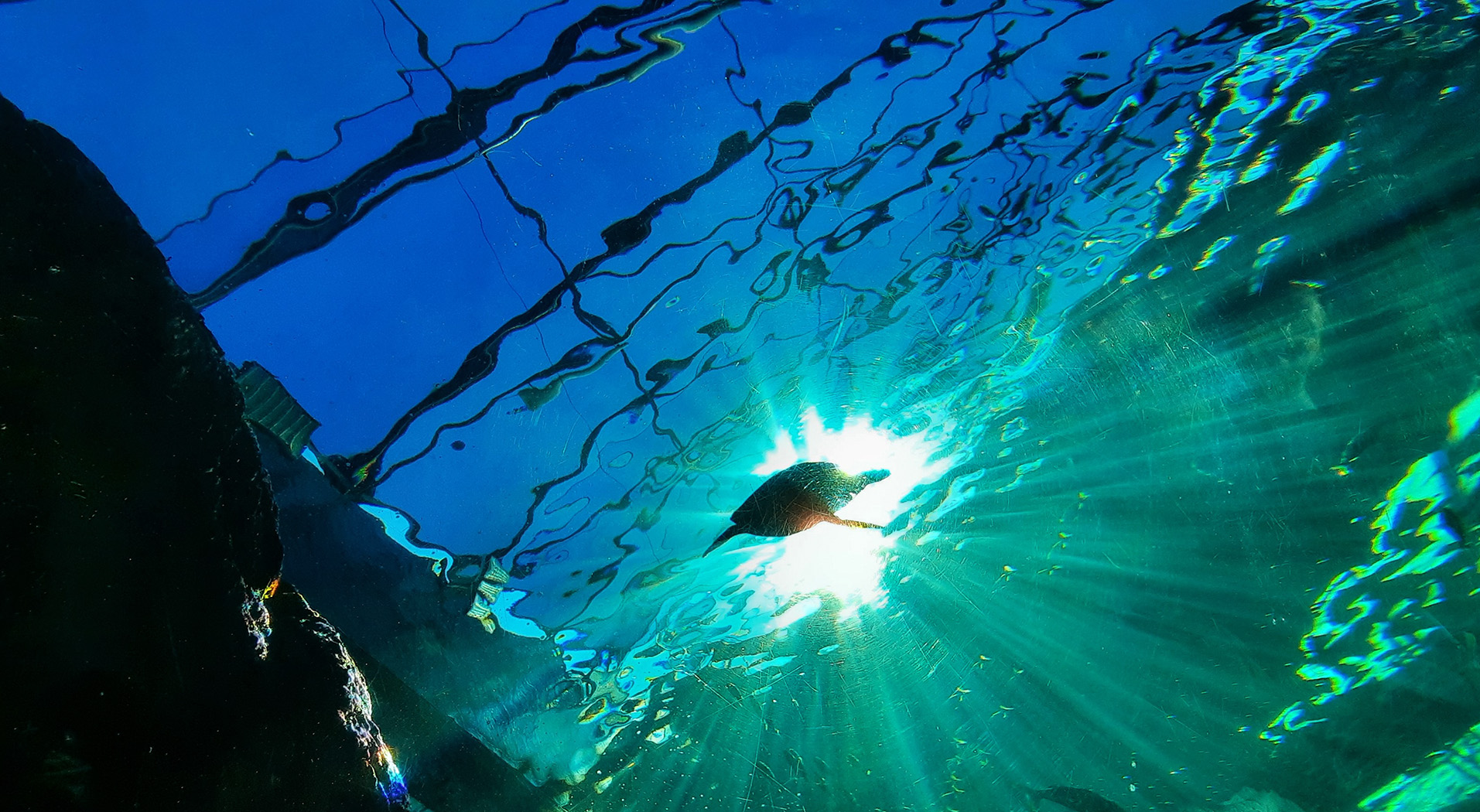
A turtle taking her exercise in the main tank. (Photo: Don Pinnock)
Down more stairs and we’re back in the public area. A darkened, mirrored area of water-filled glass tubes of glowing jellyfish leads to a huge transparent wall into the main tank, then into a tunnel where you are quite literally underwater. Swimming gracefully overhead is a large turtle.
“We’re letting her exercise and get strong before release,” says Noble-Trull. “She’ll have a lot of swimming to do after that.” DM

















 Become an Insider
Become an Insider
Comments - Please login in order to comment.